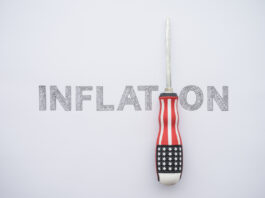- Real GDP expanded by 2.6% quarter-over-quarter (annualized) in the third quarter of 2022. The reading came in a touch above the consensus forecast, which called for a gain of 2.3% q/q.
- Consumer spending grew by 1.4% – a deceleration from the 2.0% recorded in Q2. Spending on services (2.8%) accounted for all of the gain, while goods expenditures (-1.2%) were lower. Declines in goods were spread across durables (-0.8%) and non-durable (-1.2%) expenditures.
- Non-residential business investment expanded by 3.7%, as continued gains in intellectual property products (6.9%) and a rebound in equipment investment (10.8%) more than offset the pullback in non-residential structures (-15.3%). Structures investment has now contracted for six consecutive quarters and is down 13.4% since Q1-2021.
- Residential investment (26.4%) fell sharply in Q3, as home construction slowed, and sales of new and existing homes fell by over 10% on the quarter. Outside of the pandemic, the pullback in Q3 residential investment was the largest decline since Q1-2010. From a contribution to growth perspective, residential investment shaved 1.4 percentage points (pp) from GDP.
- After having declined for five consecutive quarters, government spending rose by 2.4%, with gains coming from both federal (3.4%) and the state & local (1.7%) level.
- Exports grew by 14.4% in the third quarter, with gains spread across both goods (17.2%) and services (8.4%). Imports declined by 6.9%, as the pullback of imported goods (-8.7%) was only partially offset by the modest gain in services (2.4%). This led to a further narrowing in the trade deficit, resulting in net trade adding 2.8 pp to Q3 GDP.
- Inventory investment shaved a more modest 0.7pp from third quarter growth – a marked improvement from the 1.9pp drag in Q2.
Key Implications
- After having declined in each of the first two quarters of the year, real GDP rebounded to an above trend (~1.8%) pace in the third quarter. Admittedly, the headline number exaggerates the current degree of strength in the U.S. economy, as net exports made an outsized contribution to third quarter growth. Conversely, the domestic drivers remained relatively unchanged from the previous quarter with household consumption and fixed investment adding only 0.1 percentage points to headline growth – down from 0.5pp in Q2.
- Households experienced a record drop in net worth in the second quarter, as the sharp pullback in equities helped to erase $6.1 trillion from household balance sheets. The deceleration in Q3 consumer spending suggests the cumulative impact of higher interest rates, eroding purchasing power from elevated inflation and the decline in net worth are all exerting a considerable drag on consumer spending. With accumulated savings having been drawn down faster than previously anticipated, and a further softening in home prices expected – exerting a further drag on household net worth – consumer spending will likely continue to weaken in the months ahead.
- GDP is backward looking and will therefore have little bearing on the Fed’s decision making when they meet next week. With inflation data remaining hot and showing little conviction of rolling over and the labor market still incredibly tight, another 75-basis point hike seems likely.
